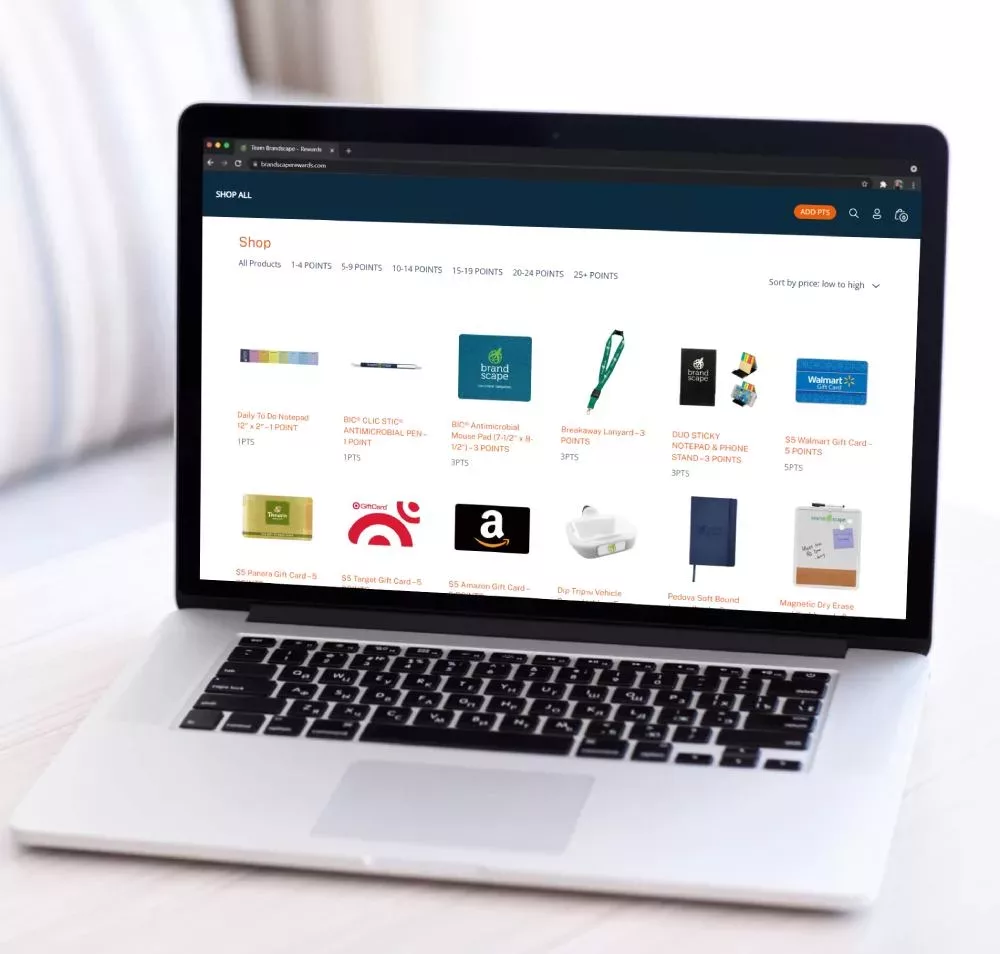Introduction
Effective company store inventory management is a crucial aspect of ensuring the smooth operation of any business that offers branded merchandise, promotional products and gift cards to its employees. Whether you’re in charge of a large corporation or a small startup, the way you handle your company’s branded merchandise store can greatly impact your bottom line and the satisfaction of your workforce. In this blog post, we will explore the significance of setting up a company store for employees, discuss the benefits it brings, and delve into the intricate world of merchandise inventory management. We will also provide you with best practices and tools to avoid common pitfalls like stockouts and overstocking, ultimately ensuring your company store runs like a well-oiled machine.
Table of Contents
Setting Up a Company Store for Employees
Before we dive into the intricacies of inventory management, let’s first understand the concept of a company store for staff. A company store is a dedicated space where employees can access and purchase branded merchandise related to their workplace. This could include branded apparel, promotional items, and gift cards. But why should you consider setting up such a store and how do you measure “Is the company store good?’
Benefits of Offering Company Merchandise to Employees
- Boosts Employee Morale: A company store reinforces a sense of belonging and pride among employees. When they wear or use branded items, they become walking ambassadors for your brand.
- Fosters Team Spirit: Wearing company-branded apparel creates a sense of unity among team members. It promotes camaraderie and teamwork, making it a valuable tool for building company culture.
- Enhances Brand Loyalty: When employees have access to exclusive company merchandise, they are more likely to feel connected to your brand. This can translate into increased loyalty and commitment to your organization.
Considerations for Launching a Successful Company Store
Setting up a company store for employees is a promising endeavor, but it requires careful planning. Here are some key considerations:
- Product Selection: Choose branded merchandise that resonates with your employees and aligns with your brand image. Consider conducting surveys or gathering feedback to understand their preferences.
- Pricing Strategy: Determine the pricing structure that strikes a balance between affordability and profitability. Offer discounts or incentives to encourage participation.
- Store Accessibility: Make the store easily accessible to all employees through an online platform. User-friendly interfaces are essential for a seamless shopping experience.
- Inventory Management: Efficient inventory management is essential to prevent stockouts and overstocking, which can be detrimental to the store’s success.
The Role of Company Stores in Employee Engagement
Now that we’ve explored the concept and benefits of company stores, let’s examine their role in employee engagement.
Impact on Company Culture and Brand Loyalty
A well-managed company store can be a powerful tool for shaping company culture. When employees proudly wear or use company merchandise, it fosters a sense of unity and pride in belonging to the organization. This positive sentiment extends to brand loyalty as well.
Real-World Examples of Successful Employee Merchandise Programs
Numerous companies have harnessed the potential of company stores to boost employee engagement and brand loyalty. For instance, tech giants like Google and Apple offer a wide range of branded merchandise to their employees, creating a sense of belonging and pride. These real-world examples demonstrate the tangible benefits of investing in employee merchandise programs.
Inventory Management Process in Company Stores
Now, let’s shift our focus to the heart of effective company store management: the inventory management process.
Overview of the Inventory Management Process
Inventory management involves overseeing the entire lifecycle of branded merchandise, from procurement to sales. Here are the key stages:
- Procurement: Sourcing products from suppliers, considering factors like quality, cost, and delivery times.
- Storage: Properly storing merchandise in a secure and organized manner to prevent damage or theft.
- Tracking: Implementing systems to monitor inventory levels in real-time, ensuring you know what’s in stock at all times.
- Order Fulfillment: Efficiently processing orders, including packaging, shipping, and delivery.
Key Components of Effective Inventory Management
To maintain optimal inventory levels, consider the following components:
- Demand Forecasting: Use historical data and market trends to predict demand accurately.
- Safety Stock: Keep a buffer of extra inventory to prevent stockouts during unexpected spikes in demand.
- Inventory Turnover: Strive for a balance between carrying enough inventory to meet demand without overstocking, which ties up capital and storage space.
The Impact of Inventory Management on Cost Control
Effective inventory management directly affects your bottom line. Overstocking ties up capital that could be used elsewhere, while stockouts result in missed sales opportunities and potential damage to your brand reputation. By striking the right balance, you can control costs and ensure efficient operations.
Best Practices for Avoiding Stock Outs
Stockouts can be detrimental to your company store’s reputation and employee satisfaction. To avoid them, consider these best practices:
- Regularly Monitor Inventory: Implement a robust tracking system to monitor inventory levels in real-time.
- Set Reorder Points: Determine minimum inventory thresholds that trigger reorders to replenish stock.
- Forecast Demand Accurately: Utilize data and historical trends to make informed decisions about future demand.
- Prioritize Supplier Relationships: Cultivate strong relationships with suppliers to ensure timely deliveries.
Inventory Management Tools and Software
To streamline your inventory management process, consider using inventory management tools and software. These solutions can help you:
- Automate Reordering: Set up automated reorder points to replenish stock when it reaches a certain level.
- Track Inventory in Real-Time: Gain instant visibility into your inventory levels, enabling quicker decision-making.
- Analyze Data: Use analytics to make data-driven decisions about procurement, pricing, and stock levels.
- Integrate with Sales Channels: Seamlessly connect your company store with your e-commerce platform for smoother order processing.
Conclusion
Effective company store inventory management is a multifaceted process that impacts employee engagement, brand loyalty, and the bottom line. By setting up a company store for employees and implementing robust inventory management practices, you can avoid stockouts and overstocking, ensuring a positive experience for both employees and your organization. To further enhance your company store management, consider using a partner that offers a full-cycle solution. To learn more about how Brandscape can assist you in setting up and managing a successful company store, visit our website.
Incorporating these strategies and tools will not only optimize your company store’s inventory management but also contribute to a more engaged and loyal workforce, ultimately benefiting your organization in the long run.


